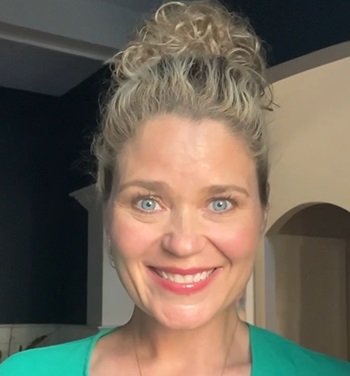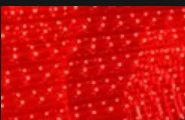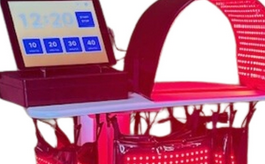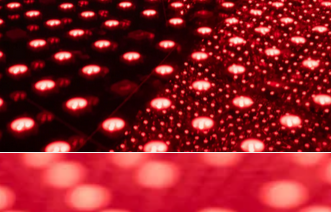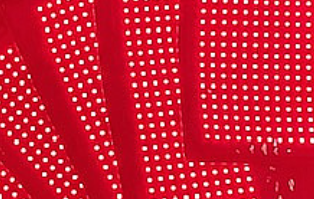Ask for Sue Open 8am-8pm 1-888-547-5296 |
DiscountRedLights.com.
... as I had paid too much and was misinformed for my first led light units...
|
Ask for Brian Open 8am-8pm 1-888-547-5296 |
Biggest complaints users have after purchasing a red light bed (or pad/pod):
False or Misleading Advertising:
Avoiding scams is easier when you measure the red light's intensity over the plastic covering. Most red light beds start with an irradiance of over 100mW/cm², with coverings ranging from 1/32 to 1/8 of an inch thick.
Made in USA or Made in China:
If you want one made in the USA, only two brands on the market manufacture their parts domestically rather than importing and assembling them. Be sure to understand the difference between "Made in the USA" and "Assembled in the USA."
EMF concerns: Lower-wattage diodes produce less EMF. Red light beds with the lowest EMF typically have the shortest session times, a 1/32-inch plastic cover over the diodes, and a starting wattage of 65 or lower. In our tests, 65 watts was the lowest-wattage model with the least EMF.
I never sell high-EMF red light units (beds/pads/pods). The highest EMF reading I’ve tested is 37 mG. For comparison, a microwave oven on low, measured right next to the window, emits 51 milli-gauss.
Note: A red light bed with an irradiance of 65mW/cm² (the highest we tested) and a 10-minute session totals 650. Meanwhile, a bed with 37mW/cm² over a 30-minute session totals 1,110. The key is to multiply the EMF rating by the session time to determine overall exposure. If you’re concerned about minimizing radiation from your red light bed, let’s discuss it when we talk.
Off-gassing warning - smelling up the whole clinic/office:
A strong odor can fill your entire office, especially with many Chinese imports. In contrast, U.S.-made red light beds do not have this issue. I personally won’t use a red light bed unless it’s free from BPA. Be sure to mention this in my red light bed quiz. If your bed emits a strong smell for months until it fully off-gasses, consider this your advance warning. Remember to mention this in your red light quiz.
It feels TOO HOT on the back: why so?
The thicker the plastic covering on a red light bed, the hotter it will feel on your back. The thinner, the cooler.
Beds with a 1/32-inch plastic cover don't retain latent heat like those with a 1/8-inch cover. The thicker covers feel much hotter, and while they induce whole-body vasodilation quickly, much of the heat comes from the plastic rather than true absorption of wavelengths from the diodes.
Glaring issue: The heat isn't caused by high-powered red light diodes but rather by inefficient, high-heat circuit boards beneath the LEDs.
Lying on a bed with a 1/8-inch plastic cover is similar to using a heating pad from Walmart - it traps heat, releases more histamine, and can make your back red and itchy. In contrast, beds with a 1/32-inch cover don’t retain as much heat, allowing the wavelengths to penetrate deeper into the body. Look into salamander studies to understand this concept better.
All I feel is heat from the circuit boards when the top is too far away
I prefer red light beds with canopies no more than 3 inches away. If you’ve looked into salamander studies, you’ll understand why. But feel free to call me, and I can explain. I especially like zero-gravity models since their canopies are positioned closer than older designs.
Fans that make the red light units "loud"
Older models - and even some still sold today - use fans, while newer ones with low-heat circuit boards no longer need them. The heaviest red light beds with fans can weigh up to 800 pounds and require 30 amps just to power and cool them. They make disturbing noise.
"Despite using high-end light-sensitive serums, I haven’t seen any noticeable results."
Most red light beds don’t effectively activate light-sensitive serums. For them to work, the light must be strong enough, and the room must be completely dark. Beds with low projection angles or canopies positioned too far away won’t deliver the right intensity. If you're using a red light bed for skin rejuvenation and incorporating serums, reach out to me. I shall let you know a lot more on this.
"Experiencing back and shoulder pain after using a red light unit"
Try shortening your sessions on a higher-powered bed or switch to a zero-gravity model for better support and comfort.
Complaints and concerns about red light beds, pads and pods
IMPORTANT: PLEASE READ THIS PAGE BEFORE CALLING ME.
For details, visit my Red Light Complaints Page HERE
What's NEW?
LATEST CHANGES IN RED LIGHT BEDS AND PADS
Prices: Prices have dropped – while advertised prices remain the same, costs have decreased.
Design: Zero gravity-shaped designs. Perfect for those who prefer neither flat nor concave styles.
Shape: New designs – top canopies are now positioned closer to the body.
Covers: 1/32-inch plastic covers. 1/8-inch covers have become less common.
Machine weight: Between 100 and 200 lbs – no more bulky 500 to 800 lb red light beds.
EMF: Lower EMF – now compatible with standard 110V outlets, eliminating the need for 20 or 30 amp connections.
Source of heat: High-heat circuit boards are mostly a thing of the past. Users feel relaxed due to circuit board heat, not the red light itself.
Quietness: Loud fans are no longer needed due to low-heat circuit boards.
Smell (off-gassing): Off-gassing has mostly been addressed. Clinics no longer smell like before.
Vibration plate massaging: Frequency massages are often built-in. The post-treatment process thus no longer requires whole-body vibration sessions.
NOTICE FOR THE CONSUMER: CLASS ACTION
GET A REFUND FOR A LIGHT UNIT (BED/POD/PAD) THAT MISREPRESENTED ITS INTENSITY CLAIMS.
Companies are overstating diode output by more than five times the actual level. They measure under the plastic cover or use uncalibrated methods, such as solar power meters instead of red light meters. "The FTC Act prohibits unfair or deceptive advertising in any medium. That is, advertising must tell the truth and not mislead consumers."
If your red light bed fails to deliver the advertised intensity, federal law (and often state laws) entitles you to a refund, financial compensation, or a return.
Ask for Sue Open 8am-8pm 1-888-547-5296 |
DiscountRedLights.com.
... as I had paid too much and was misinformed for my first led light units...
|
Ask for Brian Open 8am-8pm 1-888-547-5296 |
